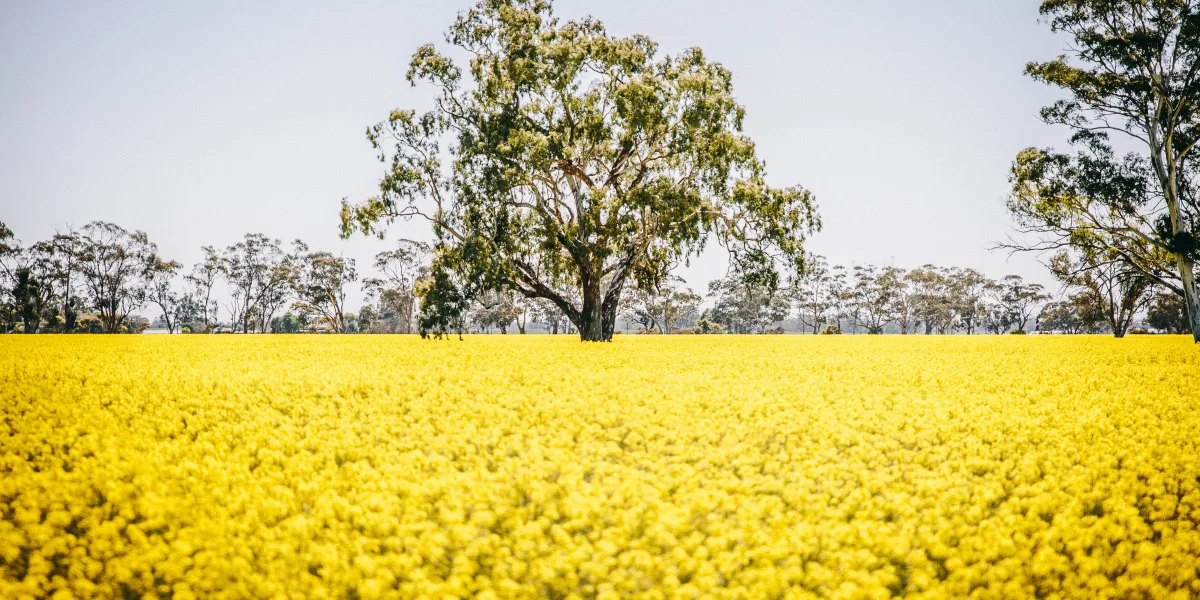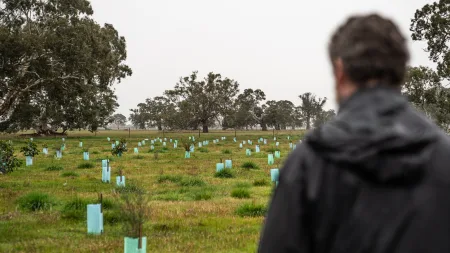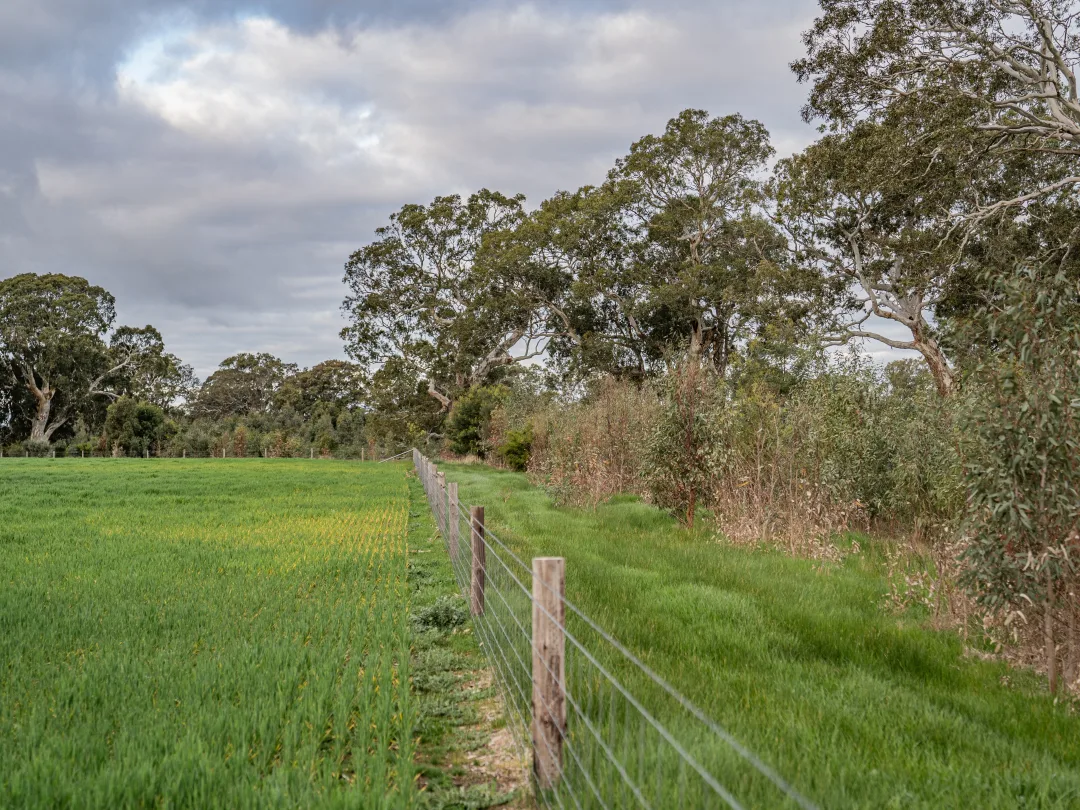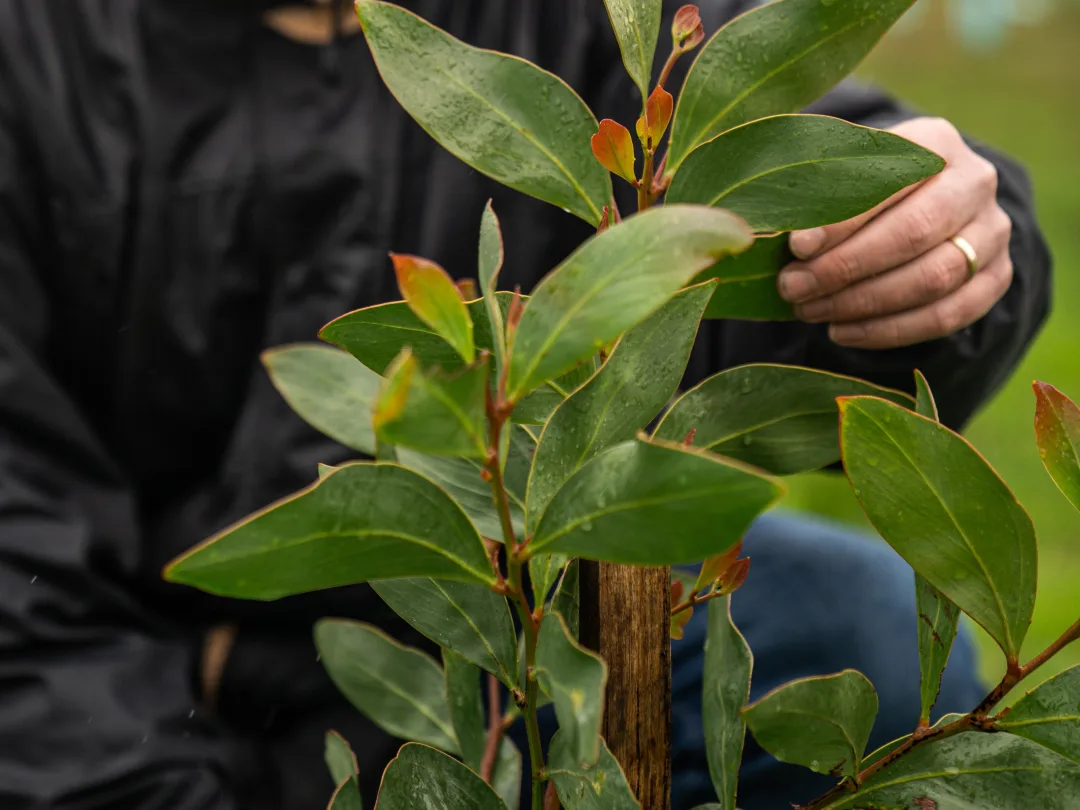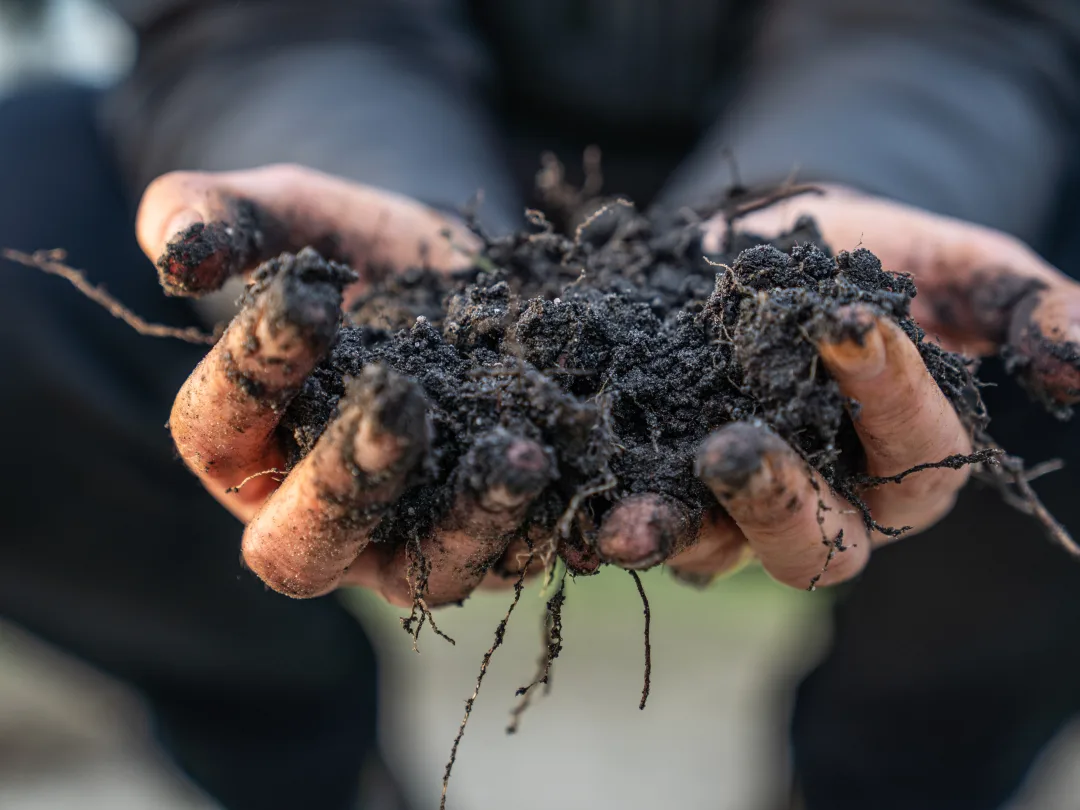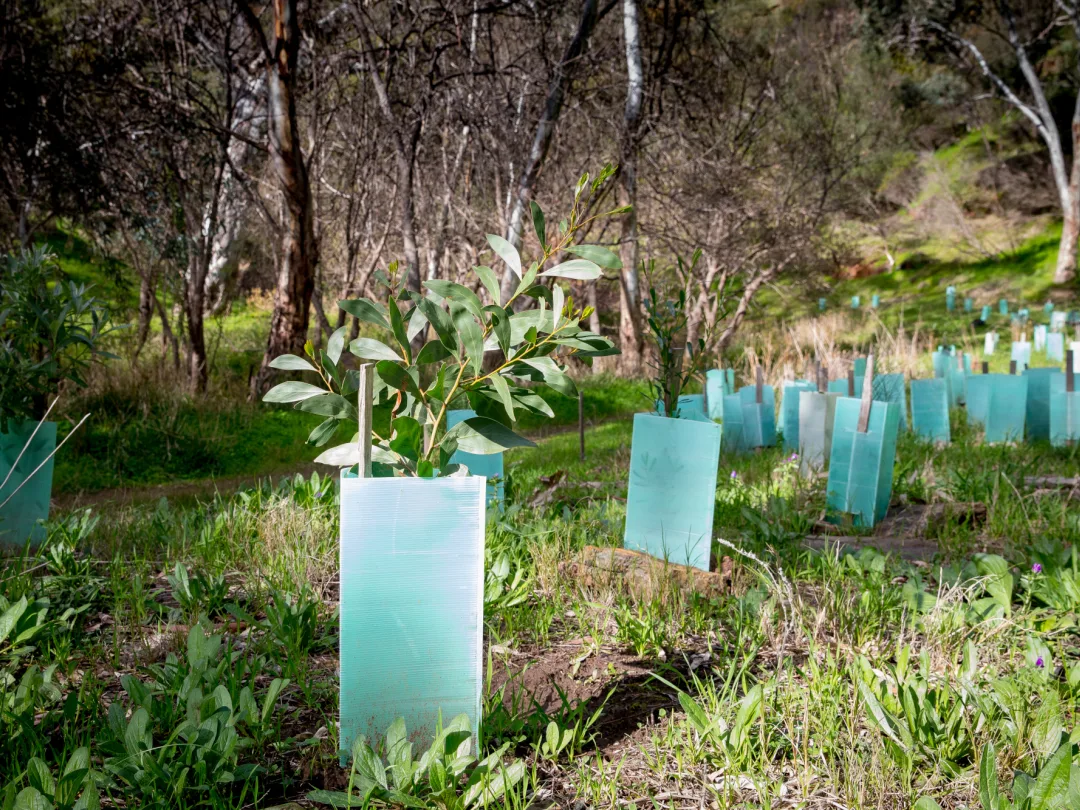Benefits of paddock trees on your farm
Paddock trees provide shade for livestock. They also provide habitat for native wildlife and insects. Native birds and animals, such as owls and bats feed on pest species such as mice, rabbits and pest insects. They also provide habitat for pollinator insects providing crop pollination services. They can also enhance soil health.
But our paddock trees are being lost due to ageing, stress and fire. Trees take generations to grow and mature to provide habitat. We urgently need to establish more paddock trees to replace ageing trees and increase the population.
Access local knowledge
The Limestone Coast Landscape Board's Bush Management Advisor has local knowledge and expertise and can provide free advice on:
- protecting existing paddock trees on your property
- natural regeneration on farm
- planting new paddock trees.
Contact our Bush Management Advisor today
Partnering to protect paddock trees
Our Limestone Coast Paddock Tree project delivered by Trees for Life can provide you with materials and advice to include paddock trees on your property:
- planting guide
- assembling tree guards videos
- frequently asked questions guide
- expression of interest form to take part in the program.
Connect with Trees for Life
Protecting existing paddock trees
The key to protecting existing paddock trees is to slow their decline. This might include:
- Incorporating existing paddock trees into farm planning. This could be planting trees around or creating a wooded pasture, with the added benefits of shelter for livestock and wildlife.
- Reducing livestock pressure by fencing.
- Protecting paddock trees from spray drift, fertiliser application and fire.
Let paddock trees regenerate naturally on your property
Natural regeneration is one way to grow more paddock trees on your property.
Manage the area by preparing the site initially by spraying weeds and removing grazing from July/August.
It then requires existing trees to provide a seed source in the soil. Conditions must then be right to enable germination and allow seedlings to emerge. Choosing a season of higher spring and summer rainfall will maximise success.
You should then protect individual seedlings, or an area of paddock. You can do this by fencing or surrounding emerging seedlings with guards or fallen limbs. This will remove grazing pressure from livestock or native animals.
The site will then need regular weed control in the targeted area and protection from grazing for the long term.
Planting new paddock trees
Establishing new paddock trees can also be undertaken using direct seeding, or by planting tubestock.
Preparing your site
It is recommended that you knock down pasture grass 12 – 18 months before planting, and again pre-planting.
Soil is best prepared by either ripping, mounding and/or creating a planting well. If you have identified the ground needs ripping undertake this task six months before planting/seeding.
Disturbed soil provides perfect conditions for weeds to germinate and thrive. You should continue to undertake weed control in preparation for planting.
Determining plant selection
Selection of plant species will be dependent the native plants endemic to the area which are thriving in the conditions present.
Ordering your plants and guards
Order your plants by the September of the year before you intend to plant to allow for quality control for success. There are a range of nurseries and growers who supply native plants that are local to your region. You can also source seed from current paddock trees and germinate and grow the seedlings yourself or use a professional. You can grow seedlings on as tubestock or direct sow on the property.
Tree guards will be of two types. Generally, a biodegradable cardboard tube will suffice to protect the individual young seedling from wind damage. An additional larger and sturdier guard will be required to protect the seedlings or tubestock from grazing by stock. Your choice of paddock tree guard will be based on its purpose, ongoing management and availability. Order tree guards ahead of time to be assured of supply and availability when required.
Planting your native plants
The best time for planting your paddock trees is when the soil is moist but not overly wet. Often in the Limestone Coast this is in June to July. In heavier soils or high rainfall areas, it may be August to September. You will need to support newly planted seedlings. You will need to maintain moisture, minimise grazing and avoid the seedlings being overgrown with weeds. You can create planting wells, use tree guards and apply timely weed control to improve survival.
Direct seeding closely mimics natural regeneration. It can enable fast vegetation establishment over large areas and is cheaper than tubestock alone. Undertaking seeding before spring is ideal. And you should follow up with weed, pest insect and animal control and exclude livestock from the area.
Install stock proof fencing, and plant five metres from any fencing to stop fallen branches damaging fencing.
Controlling pests and grazing pressure
Grazing pressures come from many sources. Timely control of red-legged earth mites, snails, rabbits, deer, kangaroos, corellas and stock is essential. Control methods such as spraying, baiting, shooting, tree guarding and fencing will give seedlings the best chance of surviving and thriving. Please note you must obtain a destruction permit from the Department for Environment and Water to control over abundant native animals such as kangaroos and corellas.
Weeds also negatively impact seedling growth. Ongoing weed control, but particularly summer weed spraying will allow seedlings to thrive.
